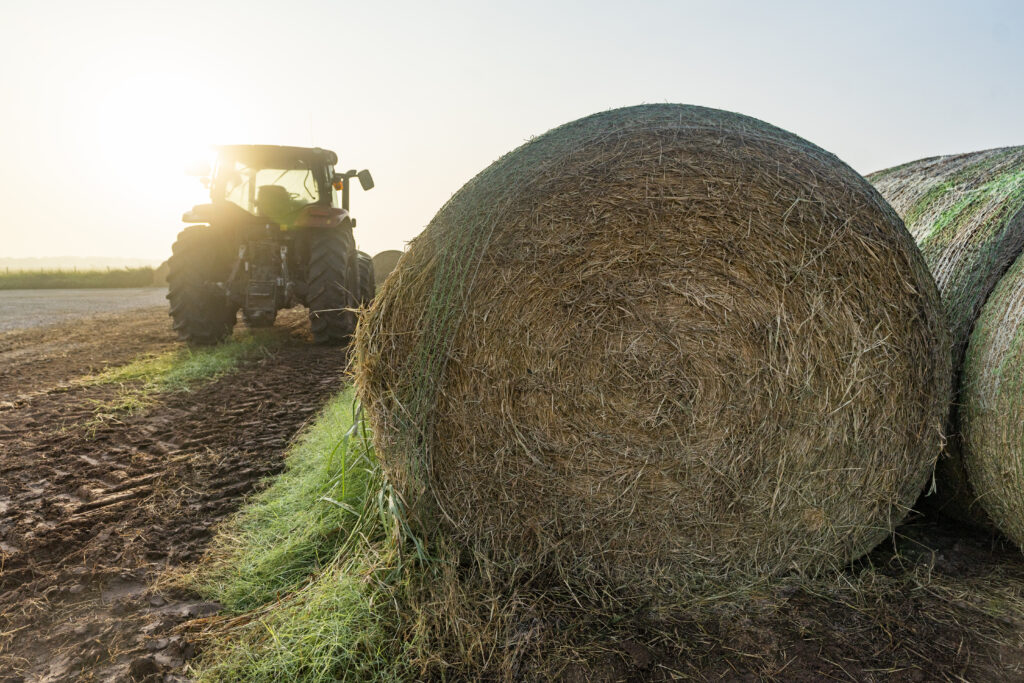State-By-State Hay Summary

Colorado—In the June 13 report, compared to the last report, trade activity and demand light. Stable hay sold mostly steady. Growers and buyers are beginning to contract new crop first cutting baled alfalfa in northeast Colorado. Growers are reducing old crop asking prices in an effort to limit carry over. According to the NASS Colorado Crop Progress Report for the week ending June 9, alfalfa first cutting harvested is 35%.
Missouri—In the June 13 report, compared to last report, the supply of hay is moderate, and demand is light to moderate. A fairly decent week for making hay around the state. Rains last weekend temporary stopped some progress but after that the week has been pretty favorable. Temps are on the rise and nearly all the southern part of the state has now been removed from the drought monitor there is a growing area in the northeast that is now highlighted as being abnormally dry.
Nebraska—In the June 13 report, compared to last report, ground and delivered hay sold steady. First test of the market this week on new crop hay in various locations with a lower undertone than many producers were hoping for. Large quantities of old crop hay around the area putting pressure on new crop bids across the state. Some producers have struggled getting first cutting alfalfa and grass hay up without rain damage. Some producers in the east are on there seconding cutting of alfalfa just 28 days from their first cutting.
Oklahoma—In the June 7 report, compared to the last report, hay trade is slow to a standstill. As we continue with rain across the state, getting the first cutting baled and producers in their fields have made it difficult. Still, a lot of old crop hay to be sold. Next report will be released June 21.
Texas—In the June 14 report, compared to last report, hay prices are mostly steady, with new crop pricing still slow to be established. Hay demand is slow to steady. Spotty rains recorded in the majority of the trading regions have slowed the hay trade as pastures are greening up. Some excess old crop hay as well as some first cutting are beginning to move, but the majority of the hay moving is still previously contracted loads that are now being delivered. Next report will be released June 28.
South Dakota—In the June 14 report, compared to last report, demand has been lower than normal for this time of year with prices being unsettled. Producers are in the middle of cutting or finishing up.
New Mexico—In the June 14 report, compared to last report, hay sales are steady and the demand is steady in most parts of the state. There has been light moisture on the east part of the state. Alfalfa hay for the first cutting is 95% complete, southern part of the state are 23% into their second cutting. According to National Agricultural Statistics Service, New Mexico field office June 9, hay and roughage supplies were reported as 40% very short, 44% short, and 16% adequate, compared with 42% very short, 46% short, 11% adequate, and 1% surplus last week. Stock water supplies were reported as 62% very short, 18% short, and 20% adequate, compared with 64% very short, 17% short, 18% adequate, and 1% surplus last week.
Wyoming—In the June 13 report, compared to last week, first real test of the new crop hay market this week with no comparable sales for a market trend. Demand was mostly light. Some producers in the eastern side of the state are putting up new crop alfalfa. Hay producers in the central and western reporting areas are planning on harvesting first cutting next week. Tonnage so far looks like a normal year. Few, reports of weevils in different areas of the state. Some producers have applied spray and others have opted not to. Cost of spraying is rather high this year and with decrease in hay prices many can not make it cost effective.
Montana—In the June 14 report, compared to last report, hay sold generally steady to weak. Hay sales were light this past reporting period as most ranchers have cattle turned out on summer pasture and range. Most of the hay purchased was purchased for use next winter. Buyers were looking for deals on old crop hay, bidding producers mostly lower money as reports of new crop hay conditions have been good in many locations in eastern Montana. Initial reports of new crop have been very good for quality, however tonnage is being reported as lighter than last year. Initial new crop hay sales are near steady with old crop prices. Next report will be released June 28.



